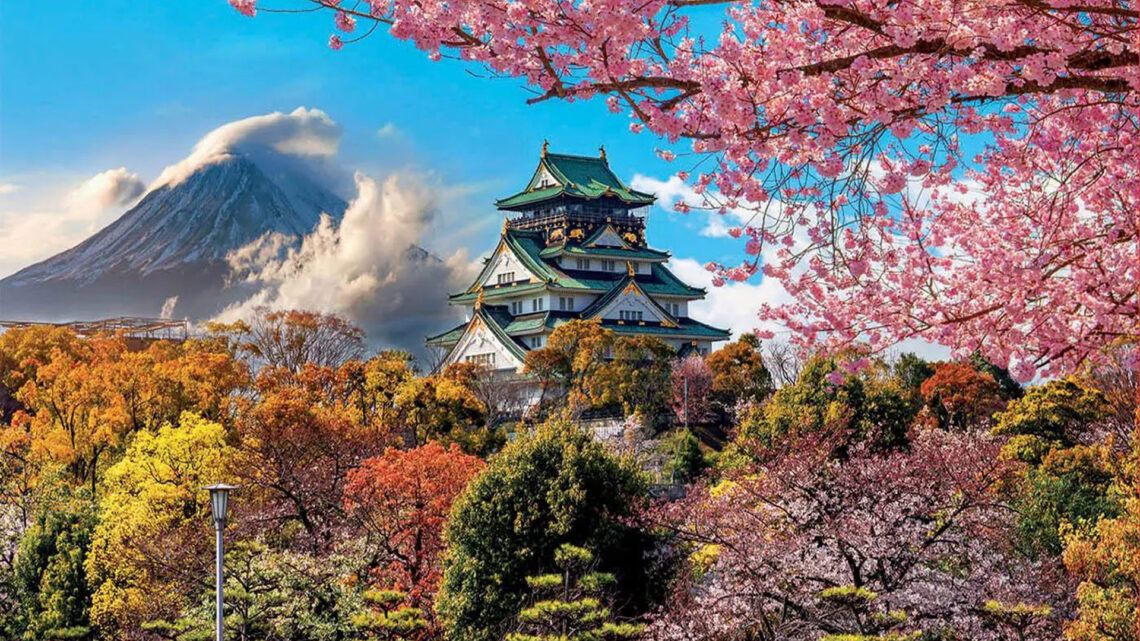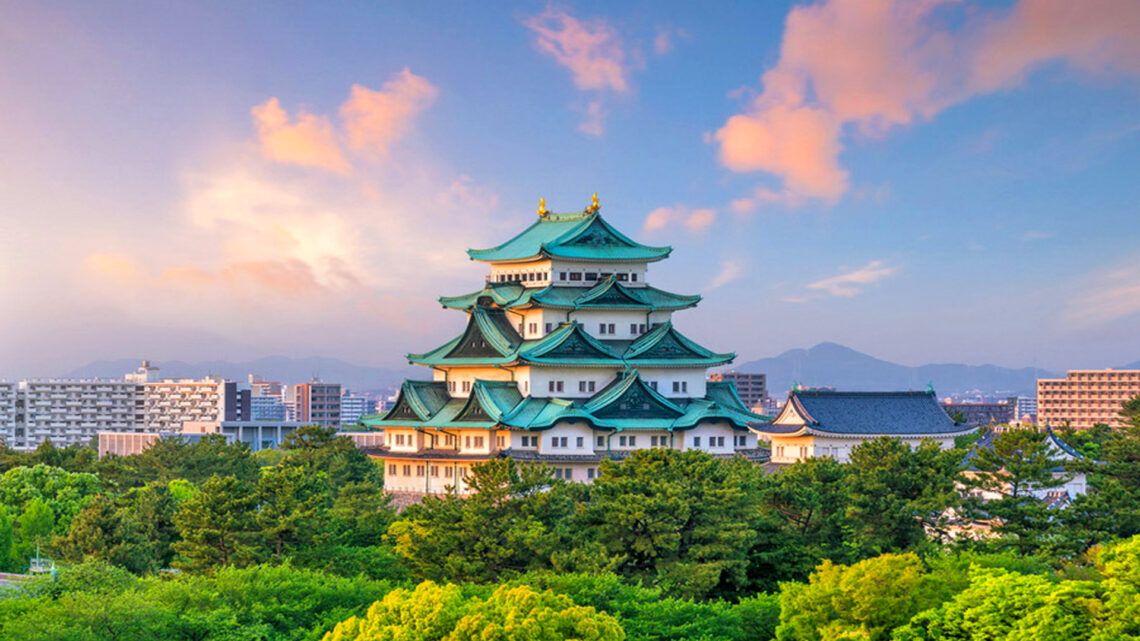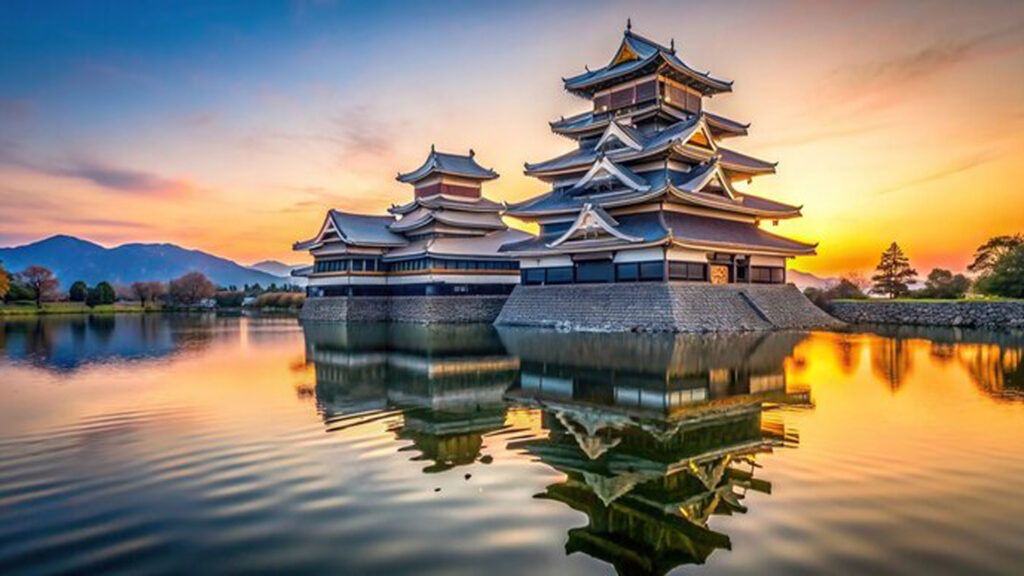
Matsumoto Castle, also known as the “Crow Castle” (Karasu-jo), is an architectural masterpiece and one of the best-preserved castles from Japan’s feudal era. Its unique design, dark wooden walls, and strategically planned location give the castle its distinctive charm. Located in Matsumoto City in Nagano Prefecture, it stands not only as an impressive example of Japanese fortress architecture but also as a significant cultural heritage site that attracts tourists from around the world.
The history of Matsumoto Castle dates back to the late 16th century, during the tumultuous Sengoku period (Warring States period), a time when Japan was embroiled in constant warfare and power struggles. Originally built in 1504 as a simple fortress to protect the region from enemy attacks, the castle took its current form later on when Toyotomi Hideyoshi, one of Japan’s most influential warlords, ordered it to be expanded into a full-fledged castle. The construction, which took place between 1590 and 1594 under the supervision of the Ishikawa daimyo family, transformed Matsumoto into one of the most important military positions in the region.
The Sengoku period, also known as the Warring States period (1467–1615), was an era marked by the collapse of central authority under the Shogunate, causing Japan to fragment into various regional warlord factions. During this chaotic time, clans and warlords fought fiercely for control over different provinces. Matsumoto Castle was strategically used as part of these conflicts and played a significant role in defending the Shinano region.
In 1550, the powerful Takeda clan seized the castle to strengthen its control over the area. Takeda Shingen, one of the most famous daimyo (feudal lords) of the Sengoku period, made Matsumoto a key military base for his campaigns. However, the fortress did not remain long in the hands of the Takeda, as it was eventually taken over by Oda Nobunaga, another influential warlord who sought to unify Japan.
After the death of Oda Nobunaga in 1582, a new era began with Toyotomi Hideyoshi, one of Nobunaga’s generals, seizing power. Known for his efforts to unify and stabilize Japan, Hideyoshi ordered further expansions to Matsumoto Castle. He appointed Ishikawa Kazumasa, a loyal vassal, as the castle’s administrator, and it was under Kazumasa’s supervision that the castle was transformed into the magnificent structure we see today.
The Ishikawa family played a crucial role in the development and expansion of the castle. Ishikawa Kazumasa and his son Yasunaga were instrumental in turning Matsumoto Castle from a simple fortress into an impressive castle complex. Construction began in the early 1590s and continued until about 1594. During this time, the main keep (Tenshu) was built, which made the castle both a symbolic and a militarily strong fortress. The keep not only served as a defense post but also as a symbol of the wealth and power of the Ishikawa family. Under Kazumasa’s rule, the region flourished, and Matsumoto developed into a cultural and economic center.
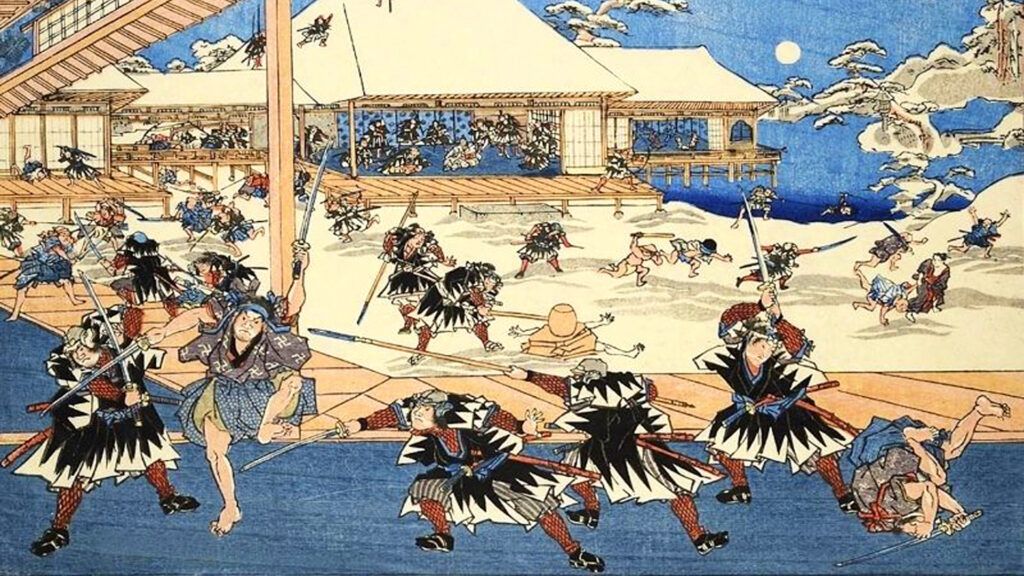
With the beginning of the Edo period in 1603, when Tokugawa Ieyasu took power and established the Tokugawa Shogunate, Japan entered a long phase of peace. During this period, also known as the Pax Tokugawa, many castles lost their original military importance and were instead repurposed as administrative centers and residences for ruling daimyo families.
Matsumoto Castle underwent a similar transformation. During the Edo period, it was no longer involved in constant conflicts but served as the seat of the Matsumoto domain, a fief under the control of the Tokugawa Shogunate. The domain was governed by various daimyo families, who used the castle as the center of their political and economic power.
The Matsumoto family, which controlled the castle for much of the Edo period, ensured that the castle was well-maintained and fostered close ties with the Tokugawa Shogunate. During this time, the castle also became a center for cultural and social events. The grand interiors, once designed for military purposes, were repurposed for receptions, celebrations, and administrative tasks.
With the end of the Edo period and the beginning of the Meiji Restoration in 1868, Japan’s feudal system collapsed, and the country’s political structure changed dramatically. The Tokugawa Shogunate was overthrown, and power was transferred to the Meiji government, which established a centralized government under the emperor. During this time, many castles in Japan were demolished or neglected as symbols of the old feudal order.
Matsumoto Castle also faced the threat of demolition, as it no longer held military significance in the new political order. In the 1870s, it was eventually sold to private investors who planned to use the land for other purposes. However, the local residents of Matsumoto recognized the castle’s cultural and historical value and raised enough funds to save it.
Particularly noteworthy is the role of Ichikawa Ryozo, a teacher from Matsumoto, who initiated a campaign to save the castle. He and the citizens of the town collected donations and persuaded the government to recognize the castle as a national cultural asset. These efforts led to the official preservation of the castle in 1903, and it was subsequently restored and maintained over the following decades.
In the first half of the 20th century, several restoration projects were undertaken to preserve Matsumoto Castle in its original glory. Particularly after World War II, intensive work was done to repair structural damage caused by earthquakes and years of neglect.
In 1952, the castle was designated a National Treasure of Japan, highlighting its significance as a historical and cultural symbol of the country. This designation ensured that the castle would be protected by the Japanese government and preserved as a valuable heritage for future generations.
In the decades that followed, continuous restoration efforts were carried out to ensure that Matsumoto Castle remained in its authentic state. Today, it is one of the few original castles from the Sengoku period still standing and attracts thousands of visitors annually.
Unique Architecture and Structure

What makes Matsumoto Castle so special is its extraordinary architecture. It is one of the few “Hirajiro”, meaning it was built on a flat area rather than on a hill or mountain, as is common with most Japanese castles. The main tower (Tenshu) consists of six levels, although it only appears to have five visible from the outside. This design was intentionally chosen to deceive attackers.
The castle’s exterior walls are a deep black, earning it the nickname “Crow Castle.” This dark façade was not only aesthetically appealing but also strategic, as it helped camouflage the castle in darkness. The walls are equipped with narrow arrow slits, allowing archers and gunners to fire their weapons while the interior of the castle was protected by intricate defense systems.
Matsumoto Castle was built with a clear focus on defense. In addition to the many arrow slits, there are hidden trapdoors to surprise intruders, as well as steep staircases that enabled defenders to move more quickly than potential attackers. The moat surrounding the castle is also a prominent element of its defense. There are both inner and outer moats, which were once filled with water to repel enemy attacks.
Another notable detail is the special stone devices placed along the castle walls. These so-called “Ishi-otoshi” were designed to drop stones on attacking enemies, making their advance more difficult. These efficient defense strategies made Matsumoto Castle nearly impregnable during its prime.
Aside from its military function, Matsumoto Castle also holds deep cultural and historical significance. During the Edo period, when peace reigned in the land, the castle lost its military importance and instead served as a government seat for local rulers. Many of the rooms inside the castle were used for political purposes and administrative tasks. The interior reflects the splendor and elegance of this more peaceful era.
Today, the castle is an important part of Japan’s cultural heritage and was officially designated a National Treasure in 1952. It serves as a living museum, providing visitors with deep insights into Japanese history, culture, and architecture. Visitors can enjoy the inner halls and the impressive view from the highest point of the tower while learning more about life and defense strategies during the feudal period.
Over the centuries, Matsumoto Castle has suffered some damage, primarily from natural disasters like earthquakes and floods. After the Meiji Restoration (1868) and the fall of the Tokugawa Shogunate, many castles in Japan fell into disrepair or were demolished, as they were no longer considered militarily necessary. Matsumoto Castle was no exception and came close to being torn down. However, thanks to the dedication and efforts of the local population, the castle was saved.
In 1904, the citizens of Matsumoto raised funds to restore and preserve the castle. These efforts marked the beginning of a long-term project to maintain this historic monument. The extensive restoration carried out in the 1950s ensured that the castle remained in its original condition. Since then, regular maintenance measures have been taken to protect the castle from deterioration and preserve it for future generations.
Today, Matsumoto Castle is one of Japan’s most visited tourist attractions. Visitors from around the world come to experience the beauty of the castle and its fascinating history. The city of Matsumoto has developed around the castle, offering numerous sights and activities for visitors.
The Crow Castle is a must-see for any history enthusiast and one of the most impressive landmarks in Japan. Whether one is interested in the military architecture of the samurai era or simply wants to enjoy the picturesque beauty of the castle and its surroundings, Matsumoto Castle provides an unforgettable glimpse into Japan’s rich history and culture.
Activities Around Matsumoto Castle
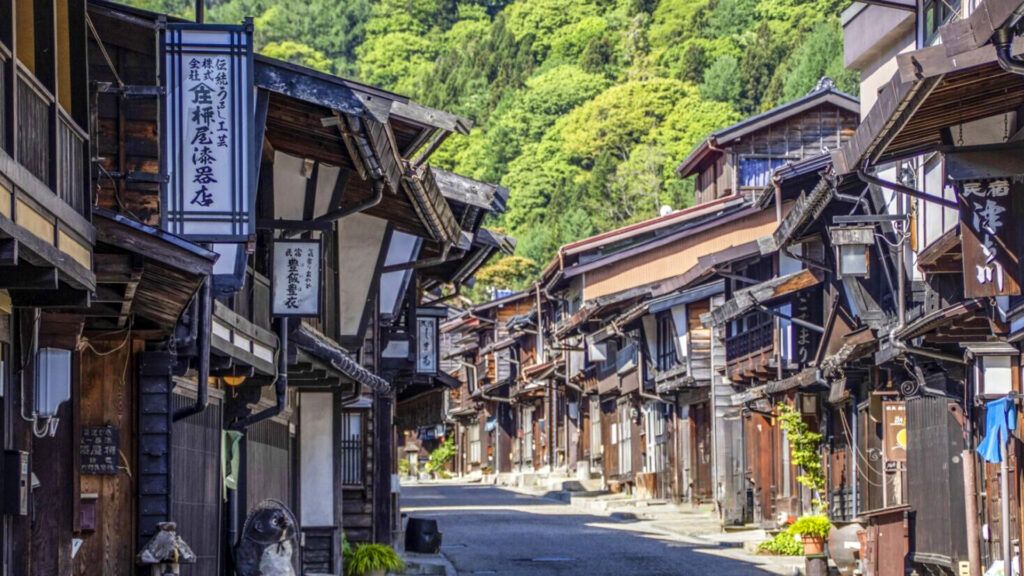
Matsumoto Castle is not only an impressive example of Japanese feudal architecture but also a cultural hub offering numerous activities and attractions for visitors. The surrounding area is rich in nature, history, and traditional Japanese culture, making it an ideal place for tourists seeking a deeper understanding of the region and its past. In this text, we explore the various activities and attractions around Matsumoto Castle that you should not miss during your visit.
Walks and Photo Tours Around the Castle
One of the first activities to consider at Matsumoto Castle is a leisurely walk around the castle grounds. The beautiful gardens and the surrounding moat provide spectacular photo opportunities in every season. Particularly during cherry blossom season in spring, when the trees are in full bloom and the castle is surrounded by a delicate pink cloud, many visitors are drawn to the site. In autumn, the vibrant reds and golds of the maple leaves create a unique spectacle as well.
Photography enthusiasts will find countless perspectives to capture the castle and its surroundings. Shots taken from the moat, where the castle towers reflect in the still water, are especially popular. In the evening, the castle is illuminated, creating an even more dramatic atmosphere that makes for stunning night photography.
Historical Tours of the Castle
One of the best ways to gain a deeper understanding of the history and significance of Matsumoto Castle is to take a guided tour. Many local guides offer exciting and informative tours that delve deeply into the castle’s history. They explain the importance of its unique defensive structures, such as arrow slits, trapdoors, and steep staircases that made the castle nearly impregnable.
The tours are available in various languages and provide insights not only into the architecture and military strategies of the samurai era but also into the everyday lives of the people who lived in and around the castle. Lesser-known details and anecdotes are often shared, presenting the castle as a vibrant part of Japanese history.
Participation in Traditional Japanese Tea Ceremonies
Another activity offered near Matsumoto Castle is participation in a traditional Japanese tea ceremony. These ceremonies provide deep insight into the art and culture of Japan and are a wonderful way to find tranquility and reflection in a hectic world. The tea ceremonies are often held in tea houses nestled in the gardens around the castle.
During the ceremony, participants learn not only how to prepare and enjoy tea in a traditional manner but also the philosophical and spiritual aspects behind this centuries-old practice. The perfect combination of aesthetics, simplicity, and rituals makes the tea ceremony a unique experience for visitors wanting to learn more about Japanese culture.
Exploration of the Historic Nakamachi District
Just a short walk from Matsumoto Castle is the historic Nakamachi district, known for its traditional Machiya houses. These old merchant homes, lining the streets of Nakamachi, date back to the Edo period and have been lovingly restored. They house a variety of small shops, cafés, and galleries offering handmade goods, crafts, and souvenirs.
A stroll through Nakamachi feels like a journey back in time. Visitors can browse charming shops, sample local delicacies, or settle into one of the traditional restaurants to enjoy authentic Japanese cuisine. Many of the stores also offer workshops where you can learn traditional crafts, such as bamboo work or Japanese lacquer art.
Visit to the Matsumoto City Museum
Located right next to the castle, the Matsumoto City Museum is another attraction that should not be missed during your visit to the region. The museum features a comprehensive collection of exhibits that illuminate the history and culture of the Shinano region. From archaeological finds to artworks by local artists, the museum provides deep insights into the past and present of Matsumoto.
Notably interesting are the exhibitions focusing on the history of Matsumoto Castle and its role in Japanese history. Visitors can learn about the various phases of the castle’s history and how it has evolved over the centuries. Additionally, there are regular special exhibitions that address different aspects of Japanese culture and history.
Cycling Along Rivers and in Nature
For active travelers, the area surrounding Matsumoto Castle also offers numerous cycling opportunities. The city of Matsumoto is located in a valley surrounded by the Japanese Alps, providing a breathtaking backdrop for cycling. There are many well-maintained bike paths along the rivers, ideal for leisurely rides.
A popular cycling route runs along the Metoba River, which flows through the city. From here, cyclists can enjoy wonderful views of Matsumoto Castle and the surrounding landscape. Those looking for a longer ride can venture into the nearby mountains to take in the stunning natural beauty. These tours are especially popular in summer and autumn when the landscape is vibrant with lush greenery or vivid fall colors.
Traditional Festivals and Events
Throughout the year, numerous traditional festivals and events take place around Matsumoto Castle, offering deep insights into local culture. One of the most famous festivals is the Taiko Drum Festival, held every summer. During this festival, various Taiko groups perform impressive drum displays showcasing the strength and dynamism of traditional Japanese music.
Another highlight is the Matsumoto Castle Ice Festival, held every winter. During this festival, the castle transforms into a fairytale winter landscape, with beautiful ice sculptures displayed around the castle grounds. Visitors can admire the artworks and participate in various winter activities, such as ice skating or the traditional Mochi-pounding (rice cake making).
Day Trips to the Japanese Alps
Matsumoto is the perfect base for day trips to the nearby Japanese Alps. The majestic mountains surrounding the city offer a variety of outdoor activities, including hiking, climbing, and skiing. In summer, the mountains are a paradise for hikers looking to enjoy fresh mountain air and unspoiled nature. Popular hikes include those on Mount Norikura and Mount Yarigatake, which provide breathtaking views of the Alps.
In winter, the mountains transform into a skiing area suitable for both beginners and experienced skiers. The nearby ski resorts of Hakuba and Nozawa Onsen are just a short drive from Matsumoto and offer top-notch slopes as well as relaxing hot springs to unwind in after a day on the slopes.
Onsen Visits and Relaxation in Hot Springs
A trip to Japan would not be complete without a visit to a traditional onsen, and there are many hot springs around Matsumoto that invite relaxation. The Asama Onsen area, located just a few kilometers from the city center, is particularly well-known. Here, visitors can bathe in mineral-rich hot springs while enjoying stunning views of the surrounding mountains.
The onsen baths in the region offer a perfect way to relax after a long day of sightseeing. The hot springs are not only a place for relaxation but are also considered beneficial for health, as the mineral-rich waters can promote circulation and relieve muscle tension. Many traditional ryokan (inns) in the area offer onsen baths that can be enjoyed by both day visitors and overnight guests.
Matsumoto Castle and its surroundings offer an impressive variety of activities that are both culturally enriching and nature-oriented. Whether you want to dive into the castle’s history, participate in a traditional tea ceremony, stroll through historic districts, or explore nature in the nearby Alps, there is something for every visitor. The combination of historical grandeur, cultural depth, and breathtaking nature makes Matsumoto a unique travel destination in Japan, promising unforgettable experiences.
Getting There and Accommodations in Matsumoto
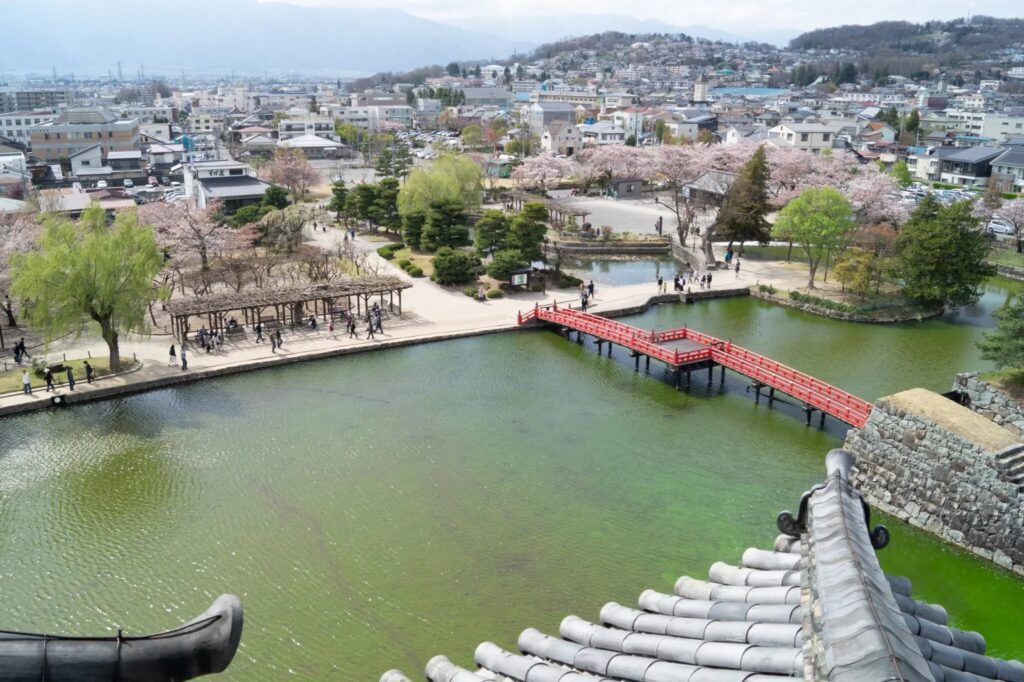
The city of Matsumoto, famous for the historic Matsumoto Castle, is a popular travel destination in Nagano Prefecture, Japan. Nestled amidst the stunning Japanese Alps, it offers visitors not only cultural richness but also beautiful natural landscapes. For travelers wishing to visit this charming city, there are various ways to reach Matsumoto and a range of accommodations suitable for every taste and budget. This guide covers everything you need to know about getting there and the best lodging options in Matsumoto.
Matsumoto is well-connected to other major cities in Japan, such as Tokyo, Nagoya, and Osaka. Thanks to a well-developed rail and bus network, as well as proximity to Matsumoto Airport, the city is easily accessible.
Getting There by Train:
One of the most popular and convenient ways to reach Matsumoto is by train. Japan boasts a well-organized and efficient railway network, making it easy to visit even remote areas.
From Tokyo to Matsumoto
The fastest connection from Tokyo to Matsumoto is via the JR Azusa Limited Express, which departs from Shinjuku Station in Tokyo. The journey takes about two or tree hours and offers picturesque views showcasing the charm of rural Japan. Alternatively, you can take the Hokuriku Shinkansen and transfer to a local train in Nagano, which takes about three hours. Both options can be accessed with the JR Pass, making it an attractive option for international tourists looking to save money.
From Nagoya to Matsumoto
Travelers coming from Nagoya can take the Shinano Limited Express, which reaches Matsumoto in about two hours. This train runs through the Kiso Valley, offering stunning views of the surrounding mountains and rivers.
From Osaka to Matsumoto
From Osaka, Matsumoto can be reached via a combination of the Shinkansen and the Limited Express. Travelers can take the Shinkansen to Nagoya and then transfer to the Shinano Limited Express. The total travel time is about four hours.
Getting There by Bus
For budget-conscious travelers, traveling by bus is an economical alternative to the train. There are numerous long-distance bus services connecting Tokyo and Matsumoto, as well as other nearby cities.
Bus Connections from Tokyo
Several bus companies, including Willer Express and Keio Bus, offer direct routes from various bus terminals in Tokyo to Matsumoto. The journey takes about four hours, depending on the departure point and traffic conditions. The buses are typically comfortably equipped and provide a cost-effective way to reach Matsumoto.
Bus Connections from Nagoya and Osaka
Direct bus connections to Matsumoto are also available from Nagoya and Osaka. These buses are a good option if you prefer a relaxed journey while enjoying the breathtaking scenery along the route. The bus ride from Nagoya takes about three hours, while it takes about five hours from Osaka.
Getting There by Plane
For travelers coming from more distant regions of Japan or abroad, there is Matsumoto Airport (Shinshu Matsumoto Airport). Although the airport is small, it offers domestic flights to and from Sapporo and Fukuoka. From the airport, bus services and taxis can take you to downtown Matsumoto in about 30 minutes.
Getting Around in Matsumoto
Getting around Matsumoto is relatively easy. The city is compact, and many attractions are within walking distance. However, there are also other convenient transportation options.
Many of the main attractions, including Matsumoto Castle and the historic streets, are located in the city center. Matsumoto is designed for pedestrians, allowing you to explore most sights easily on foot.
Bicycles
Bicycles are a popular means of transportation in Matsumoto. Many hotels and hostels offer bike rentals, and there are well-developed bike paths throughout the city. Cycling is a relaxed way to explore the city and its surroundings, especially on sunny days.
Public Buses
Matsumoto has a well-developed public bus system that takes tourists to all parts of the city. Notably convenient is the Town Sneaker Bus, a special tourist bus line that offers a tour of the main attractions.
Taxis
Taxis are also widely available in Matsumoto and can be a convenient alternative, especially if you need to travel longer distances or transport luggage. Taxis are available at train stations and near major hotels.
With these transportation options and a variety of accommodations, you can easily explore Matsumoto and enjoy all it has to offer.
Accommodations in Matsumoto
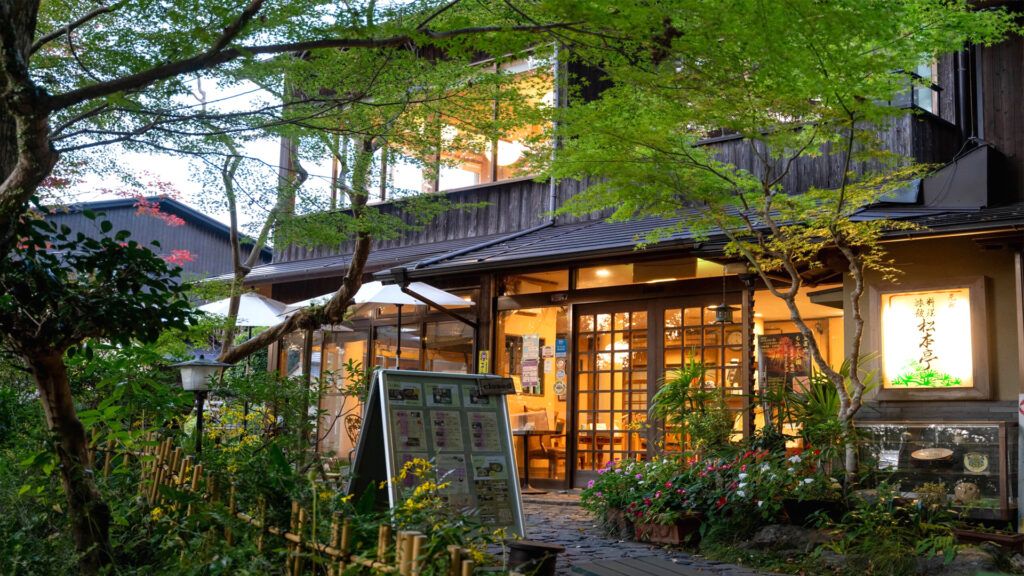
Matsumoto offers a variety of lodging options, from luxurious hotels to traditional ryokan and budget-friendly hostels. Here are some of the best accommodation choices suitable for different budgets and travel preferences.
Traditional Ryokan
For travelers seeking an authentic Japanese experience, staying in a traditional ryokan is an excellent choice. These traditional inns provide a unique combination of Japanese design, hospitality, and comfort.
Ryokan Seifuso
This family-run ryokan is known for its warm atmosphere and hot springs (onsen). The rooms are furnished in the traditional tatami style, offering a relaxed and authentic experience. The ryokan also serves Japanese meals prepared with local ingredients.
Asama Onsen Nishiki no Yu Jimotoya
Located near the Asama Onsen district, this ryokan offers stunning views of the surrounding mountains. Guests can enjoy the hot springs as well as try a traditional kaiseki meal (multi-course dinner). It’s an ideal choice for those seeking tranquility and relaxation in a natural setting.
Mid-Range Hotels
If you are looking for comfortable and practical accommodations, Matsumoto has a variety of mid-range hotels that offer a good balance between price and quality.
Hotel Buena Vista
Situated in the city center and just a short walk from Matsumoto Station, Hotel Buena Vista offers modern, comfortable rooms and several restaurants serving both Japanese and Western cuisine. The hotel is popular among business travelers as well as tourists.
Premier Hotel Cabin Matsumoto
Located directly across from Matsumoto Station, this hotel is ideal for travelers who prefer a central location. The rooms are compact yet well-equipped, and there is a wide range of restaurants and shopping options nearby. It’s particularly convenient for those using Matsumoto as a base for day trips.
Budget Options and Hostels
For budget-conscious travelers, Matsumoto offers a range of budget accommodations and hostels that still guarantee a pleasant stay.
Matsumoto Backpackers
This cozy hostel is near the train station and is an excellent choice for backpackers and solo travelers. The communal areas encourage interaction with other travelers, and the hostel also offers bicycle rentals.
Tabino Hotel lit Matsumoto
A modern budget hotel with stylish rooms, it is just a short walk from Matsumoto Station. It provides basic amenities at an affordable price and is ideal for short stays or travelers who plan to spend most of their time outside the hotel.
Matsumoto is not only a cultural gem but also an easily accessible destination with a variety of accommodation options for every taste and budget. Whether you arrive by train, bus, or plane, the city provides smooth connections to major cities in Japan.
My Personal Conclusion
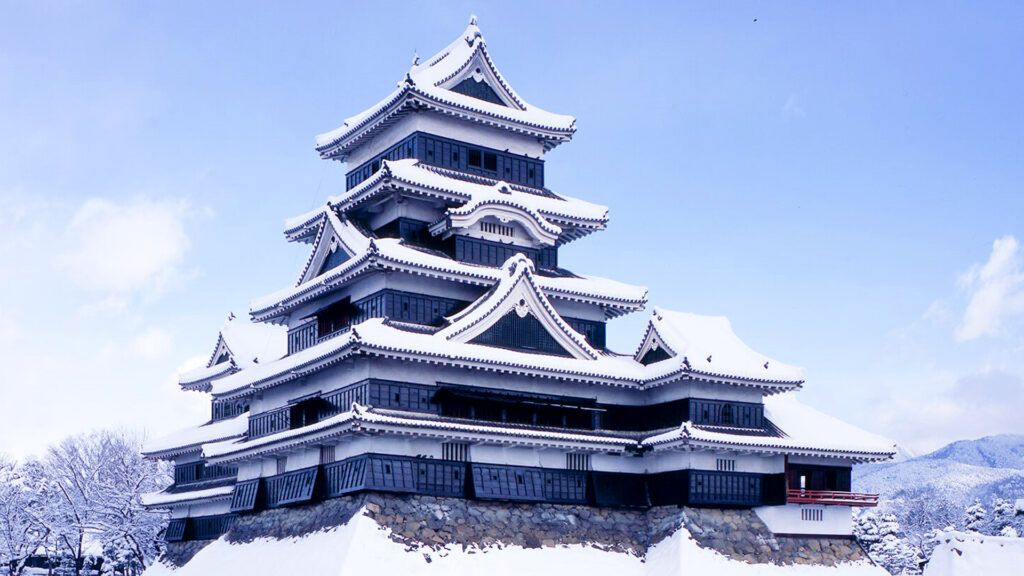
A visit to Matsumoto is a fascinating journey that harmoniously combines tradition, nature, and history. For me, the city offers a unique insight into authentic historical Japan, away from the hustle and bustle of metropolises like Tokyo or Osaka. The majestic Matsumoto Castle, one of the most beautiful preserved castles in Japan, is undoubtedly the highlight, but it’s the small, often unexpected experiences that make the charm of the city.
The surrounding natural wonders, especially the impressive Japanese Alps, provide a refreshing change, while the historic districts like Nakamachi invite leisurely strolls. Here, you can experience traditional Japan up close—whether it’s browsing through small shops, enjoying a cup of tea, or staying in one of the many cozy ryokan.
What I particularly appreciated was the relaxed atmosphere of the city, combined with the warmth of the people who take pride in sharing their culture and history, provided you are respectful of it. It feels like stepping into another time, while modern conveniences and a good tourist infrastructure ensure that you feel comfortable. Whether for history enthusiasts, nature lovers, or simply travelers in search of an authentic experience—Matsumoto has a magical quality that lingers in your memory.
Matsumoto is a destination that wonderfully unites history and nature, leaving me profoundly impressed by its tranquility and beauty.


